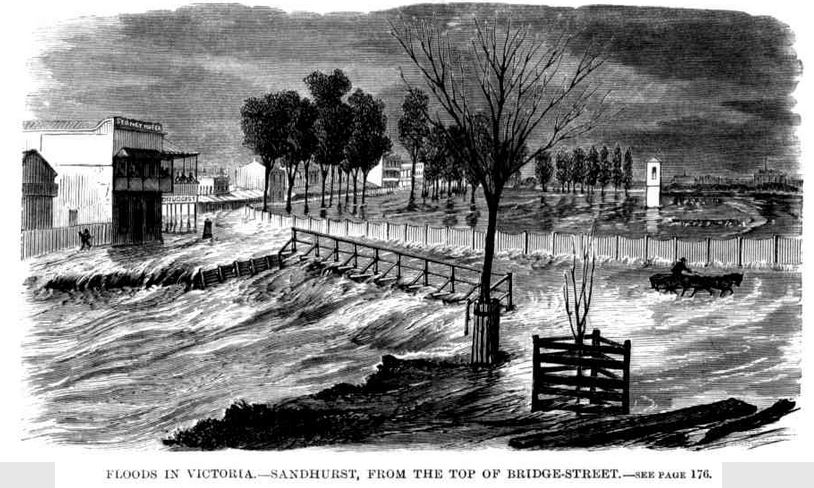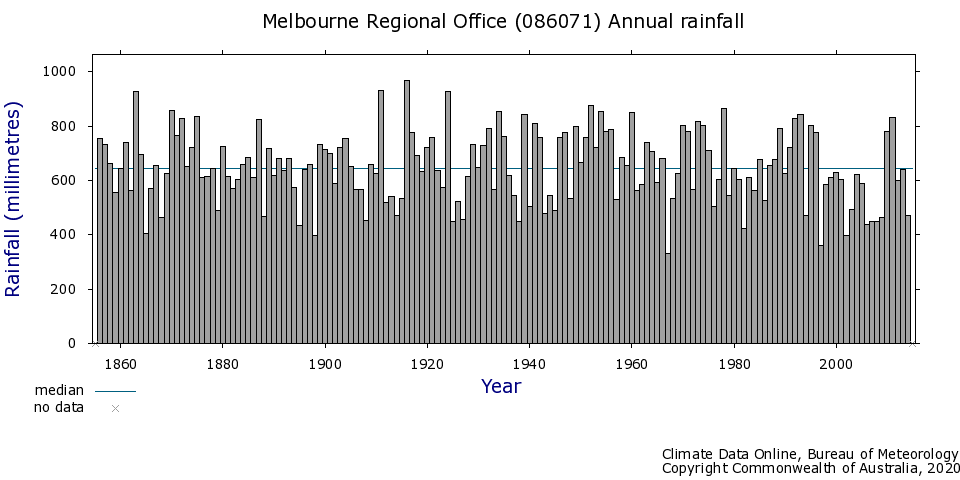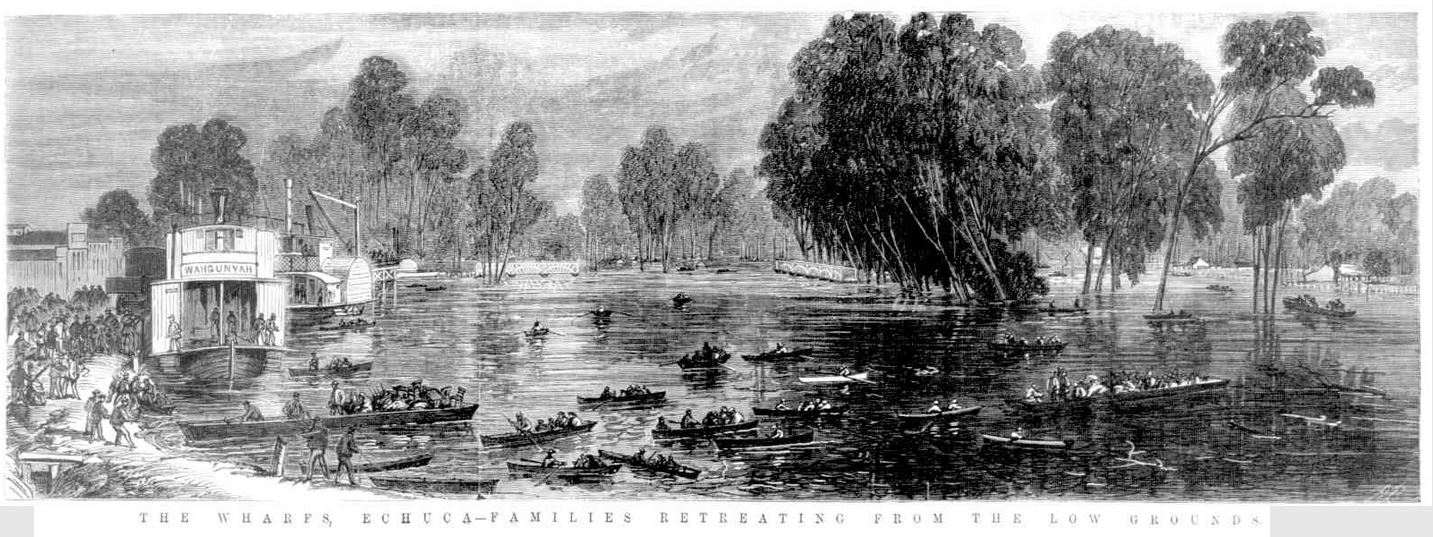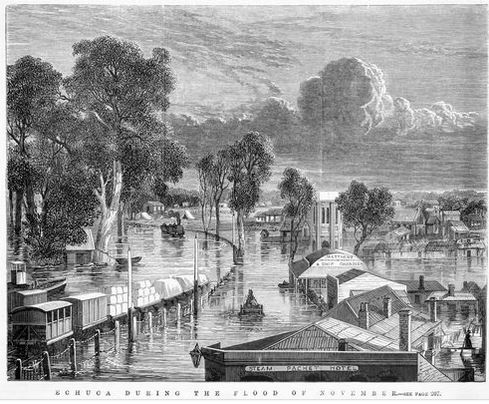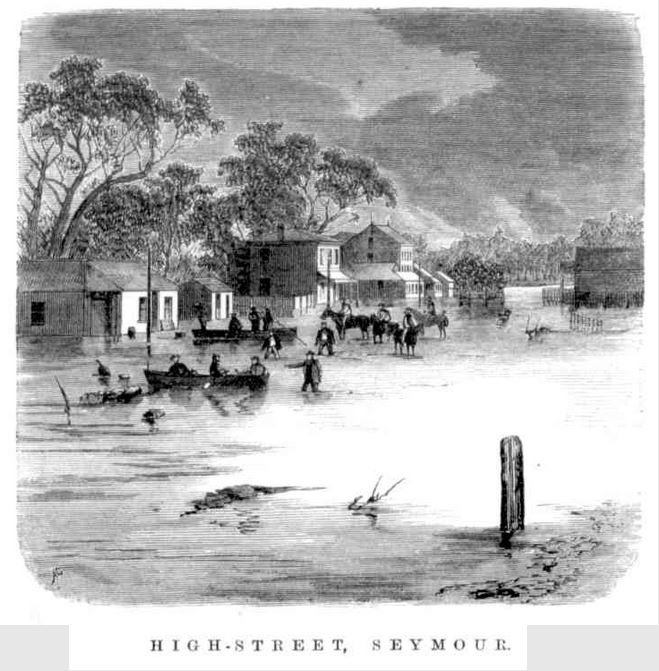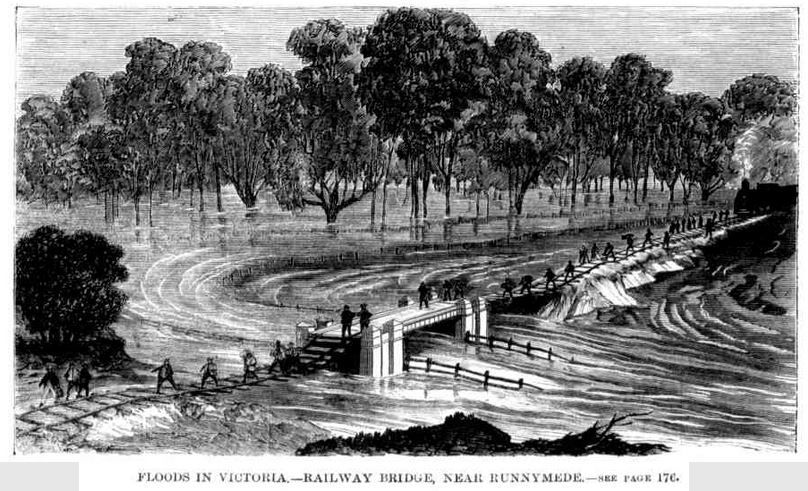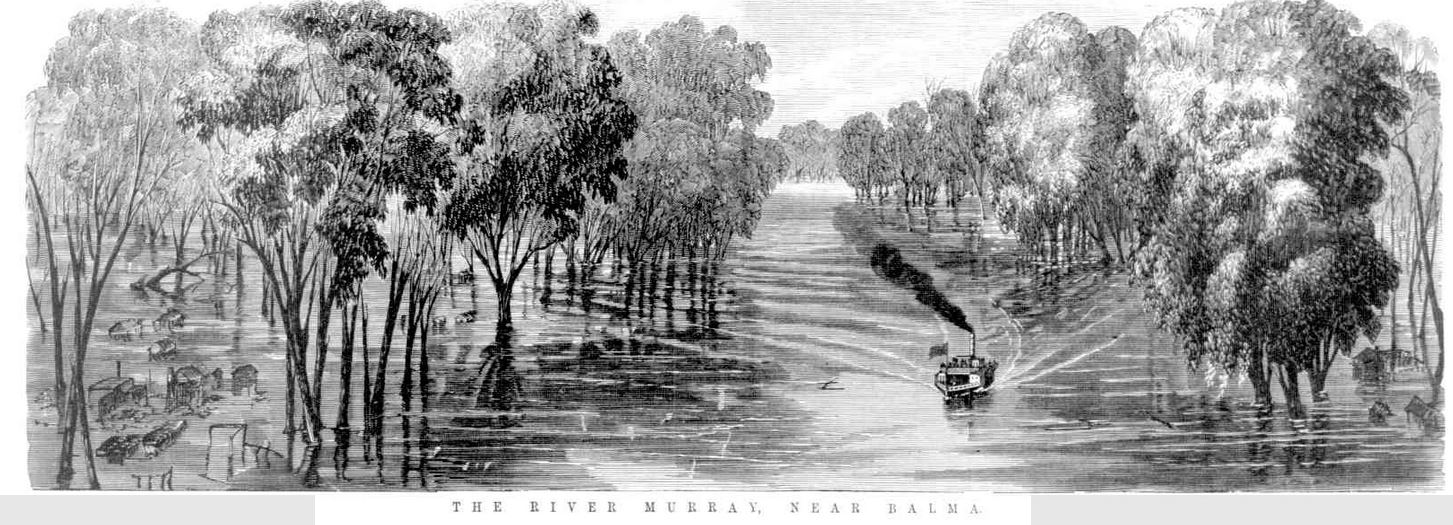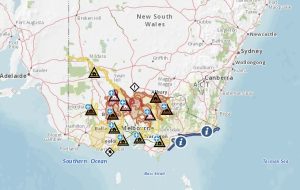by Jo Nova
There is extraordinary flooding across Victoria lately in the land of Droughts and Flooding Rains. The Australian ABC is telling us that “flooding in Victoria is uncommon“. But a ten second search on Trove Australia turned up the forgotten floods of 1870, just as one example, with these glorious drawings (below). Those floods 152 years ago seemed to affect many of the same places as the floods of 2022: the Murray River was a “vast inland lake” and almost the whole distance from Sandhurst to Echuca, about sixty miles, was underwater. Melbourne became an “antipodean Venice”. A rain-bomb dropped on the Keilor Plains and three feet of water fell “in minutes”. Train lines were left suspended in the air, and men, women, children, horses, cattle and sheep sadly drowned. And at Echuca, the water stayed high for two whole months, starting on Sept 9th but not peaking finally until November 7th.
Imagine what the ABC could do for Australia if it had a billion dollars and access to the internet?
For the record, here’s the effect of all that CO2 on Melbourne’s rainfall since 1860
Spot the trend:
The Floods of 1870 in Victoria
Imagine two months of floods?
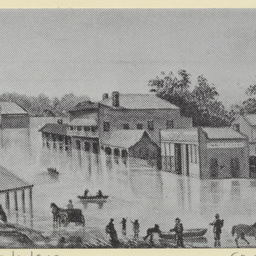
High Street in flood at Echuca in 1870 Source: Trove
Melbourne became an “antipodean Venice”
A primitive Rain Bomb: 3 feet of rain in “minutes”
…On the Keilor Plains, he said, the rain came down in a positive sheet of water, unlike anything he ever saw before, and as the wind was blowing hard as well it was impossible to face it.
People rescued each other, or died trying:
The most poignant story of all comes from Coleraine in Western Victoria (these floods seem more widespread in 1870). Here at least two men drowned trying to rescue children, who also perished.
Around 12.30 am, an attempt was made to rescue residents on the low ground, including those at the residence of Robert Wright, the brickmaker on the banks of the creek, and dressmaker Betsy Gillies. In the nick of time, the Wright family got themselves across the deluge to safe ground. Miss Gillies was woken from her slumber and also escaped. In both cases, another few minutes, and the outcome would have been disastrous.
Attention then turned to the two cottages behind the Albion office, that of the Drummonds and Lairds. By now, the water was knee-deep and the current was too fast to safely cross. Constable James Mahon made a dash for it but was carried away. Fortunately, he managed to land on top of a pigsty and was able to get back to safety. He tried again and was able to save one of the children. Storekeeper Louis Lesser also headed across the water and rescued another child. He was also able to lift Mrs Margaret Drummond out of the water and on to the roof of a cowshed. Her husband, David Drummond got three children to safety and went back for three more, James and Margeret Jr and his niece Janet. He had one on his back and one in each arm as he made his way across. Suddenly, the current caught him, and all four were swept away.
Charles Loxton, the young accountant from the National Bank of Australasia (below). attempted to cross on his horse. They were both swept away, and it was then the rescue was abandoned.
…But looking around the town, it was anything but normal. It was devastating. “The scene when morning dawned was heartrending. Men, women, and children were found on chimneys and housetops; and all sorts of property was floating about”.
The whole history of Coleraine is here. Charles Loxton was only 22. A monument to him remains today. Margaret Drummond, who lost so many in her family, would survive until 1914.
In Melbourne CBD, people used ferries to get around, factories were underwater:
…the central parts of the city were speedily deluged, and the torrents which swept down Elizabeth and Swanston streets stretched across the roadway, and reached the door steps on both sides of the street. The St. Kilda and Sandridge roads were both submerged several feet in places, and all approaches to Emerald hill for a time disappeared. From the railway to the Immigrant’s Home in the one direction, and from the Botanical Gardens to beyond Emerald-hill in the other, all the flats were covered with a sheet of water. Ferry boats were in requisition, and without the aid of these all pedestrian communication across Prince’s-bridge was entirely cut off. The whole of the low-lying land between the river and Clarendon-street, Emerald- hill, was entirely covered. The factories on the flats all suffered severely, while many of the small manufacturers have sustained losses which, in some cases, may cripple them in their operations.
Illustrated Australian News for Home Readers (Melbourne, Vic. : 1867 – 1875)
Flood map of 2022:
Thoughts and best wishes to those affected this year.
This is the area north and around Melbourne for 250 kilometers (160 miles).
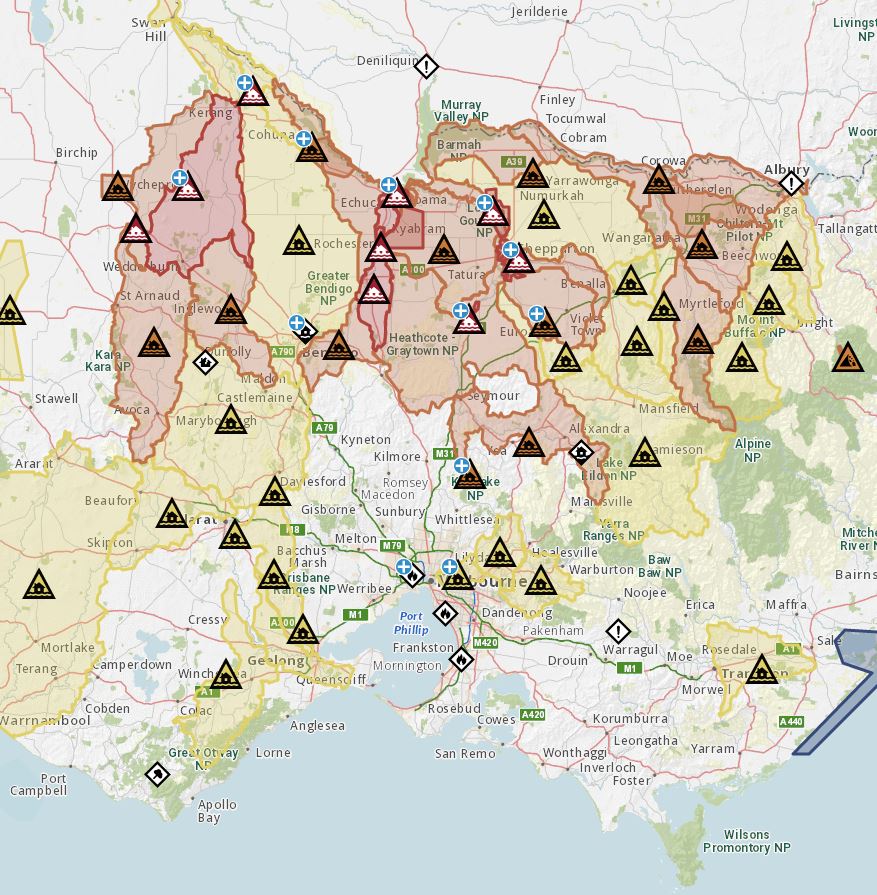
Click to enlarge. Emergency Vic
REFERENCES
The Floods of 1870 in Victoria
The Great Flood of 1870 (The story of Coleraine)
Linden AshcroftabDavid J.KarolyacAndrew J.Dowdyb(2019) Historical extreme rainfall events in southeastern Australia, Weather and Climate Extremes , 100210
And even more droughts and trends graphs here.
